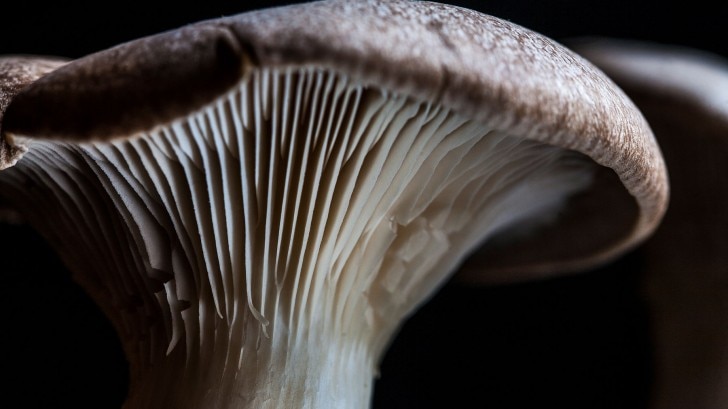BBC Earth newsletter
BBC Earth delivered direct to your inbox
Sign up to receive news, updates and exclusives from BBC Earth and related content from BBC Studios by email.
Pollution
The plastic crisis is one of the greatest challenges facing Planet Earth.
Each year, at least 14 million tonnes of plastic end up in our oceans,1 and the consequences for sealife are tragic, from choking turtles to poisoning whales. Clearly, the main solution is reducing the amount of plastic we use at the source, but people are also turning to technology, lateral thinking and even other species to find the answer to the monstrous behemoth of plastic on planet earth.
*This article was originally published in 2018
Here are five of the strangest solutions:
Aspergillus tubingensis is a darkly pigmented species of fungus that thrives in warm habitats. It is nothing special to look at, but it has one property that has made it of key interest to scientists. The big problem with plastic is that it doesn’t break down or degrade – and which is why we’ve probably got plastic inside our bodies right now. Finding agents that can break down polymers would help vastly. A group of microbiologists at Quaid-i-Azam University in Pakistan found that Aspergillus tubingensis could degrade polyurethane (PU). “The fungus secretes enzymes that degrade the plastics, and in return, the fungus gets food from it by dissolving the plastics,” said lead author Sehroon Khan. The fungus could be used to break down plastic in landfill.

The Great Pacific Garbage Patch is the largest accumulation of plastic in the oceans, and it sits between California and Hawaii. In 2018, it was three times the size of France and its total amount is 80,000 tonnes.2 Engineers from the Netherlands, led by a 24-year-old Dutch inventor called Boyan Slat, have launched an ocean cleanup system called ‘System 001’. It is an enormous, 600m long, floating, rubbish-collector, which collects plastic in a 3m deep skirt. A garbage truck ship will collect the plastic every few months. Using computer simulations and scale models, the group tested and trialled the system with hopes for it to be trialled in the Great Pacific Garbage Patch. Slat has been both praised and criticised for his invention but, currently, it is a case of wait and see. No one really knows what’s going to happen. “The moment I am looking forward most to is when we are taking the first plastic back and it’s proven technology,” Slat has said.
Another idea to come from the Netherlands is a project called PlasticRoad. It is a stretch of bike path in the Dutch city of Zwolle made of recycled plastic - and it is the first of its kind. It is a way of re-using plastic bottles, cups and packaging instead of burning it or putting it in landfill. The road uses 70 per cent recycled plastic, but subsequent versions plan to use 100 per cent recycled plastic. The company says that it is even more durable than asphalt, takes less time to install and requires less heavy equipment, making the carbon footprint smaller, too. The first road in Zwolle is 30m long and contains the recycled plastic equivalent of over 218,000 plastic cups or 500,000 plastic bottle caps. In November 2018, a second plastic road was built in Overijssel.3
The fight against plastic has led engineers and designers to search for other materials that could be used for packaging foodstuffs. Bioplastics are made from renewable biomass, usually vegetable fats and oils, cassava starch, woodchips or food waste. Seaweed, however, is the solution used by Indonesian start-up called Evoware. The company works with local seaweed farmers to create sandwich and burger wraps, sachets for flavouring and coffee, and soap packaging, all made out of seaweed. It can be dissolved in hot water or, to reduce waste to zero, the packaging is also edible. Sustainable and nutritious.

The biggest problem plastic causes is its effect on ocean life. By 2050, by some estimates, there could be more pieces of plastic than fish in the sea. One idea to stop plastic getting there in the first place is a little more abstract. The Plastic Bank is a social enterprise which pays an above-market rate for plastic waste. People who collect plastic can trade it in for money, items (fuel, cook stoves) or services, such as school fees. The project incentivises people to collect ocean-bound plastic before it enters the waterways while fighting poverty, giving people an income, cleaning up the streets, and reducing the amount of waste that goes into the oceans. The aim of Plastic Bank is to make plastic too valuable to throw away and turn it into a currency. The company then sells the plastic on to corporate clients, who pay around three times more than plastic normally costs. It operates in multiple regions including Haiti, Brazil and Philippines.
This article was originally published in 2018.
Featured image © Steve De Neef | Getty
1. Annual plastic in oceans 2. The Great Pacific Garbage Patch 3. Second plastic road built